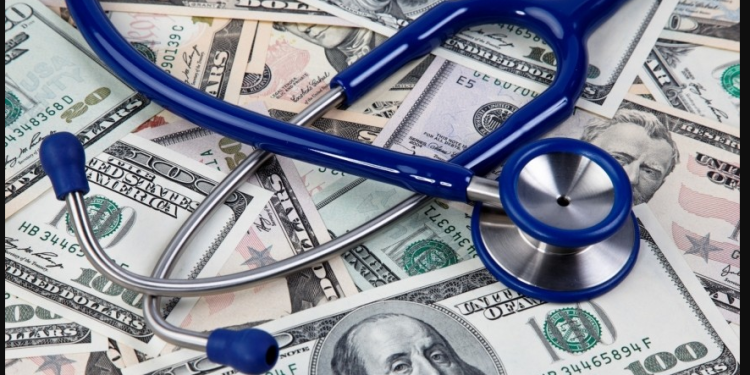The cost for health care is a major concern for Baby Boomers. They are afraid that they will not be able to afford to take care of themselves in their golden years. While Medicare spending on “healthy” retirees is just over $2,000 a year, the deductibles, premiums and out-of-pocket costs tend to increase over time.
Medicare spending for “healthy” retirees is “just” over $2,000/year
Medicare is a government-run health insurance program for elderly individuals. It has been providing basic coverage to a large number of Americans for nearly 50 years. In 2000, it served 39 million people.
There are a number of proposals for major reform. Critics claim that any dramatic changes would weaken the program’s core strengths. If such a drastic change is adopted, it could lead to disruptions in the lives of beneficiaries.
The Inflation Reduction Act limits Big Pharma price increases to inflation. However, there are a number of other factors that have an effect on the cost of medical care. Those include aging baby boomers, higher rates of obesity, diabetes and hypertension, and a lack of adequate coverage for home health care.
Cost sharing is a feature of the Medicare program. Beneficiaries are required to pay a certain amount each month, and are allowed to spend the remainder on medical bills. Typically, the amount is about a hundred dollars a month.
Non-physician health care is a measure of how often people receive medical care without seeing a doctor
There are two primary kinds of medical care: inpatient and outpatient. Inpatient services include hospital visits and therapies. Surgical treatments are provided in an outpatient facility without an overnight stay. Physicians may also provide services in a member’s home, in a nursing home, or other facility.
Physicians are licensed to provide health care under Minnesota Statutes, 147. Depending on the type of plan, physicians must obtain permission from the insurance company to provide treatment before a patient is allowed to receive the service. The plan may exclude certain types of care, such as prescription drugs.
The supply of physicians and other professionals is relatively low in the U.S., compared to other high-income countries. A number of interventions have been proposed to increase access to health care professionals.
Nevada families pay nearly 14% of their annual salary to cover premiums and deductibles
The cost of health care has skyrocketed in Nevada, according to a new study released by the Commonwealth Fund. More than one in five Nevadans now pays nearly 14 percent of their salary to cover premiums and deductibles.
The study analyzed the data on 40,000 private sector employers across the country. It found that the most expensive insurance is a good old fashioned employer-sponsored health plan, with a premium of $22,221 for family coverage in 2021. But it’s not just the pampered rich. Even middle-class families are paying the price.
The study found that, over the last decade, employee-sponsored health insurance premiums have risen dramatically. Specifically, the average contribution by covered workers to the cost of their health plan rose by 40 percent. As a result, health care costs have climbed by more than 3.4 percent, from $7,806 in 2010 to $8,070 in 2015.
However, the average premium for single coverage and premiums and deductibles combined are actually up 29.8 percent from 2019 to 2020. While it’s hard to predict what the future holds, this year’s findings may have an impact on health care consumers in Nevada.
Out-of-pocket expenses for health care tend to rise over time
Out-of-pocket expenses for health care are a vital part of private healthcare funding. For example, many individuals worry that healthcare inflation will eventually overtake annual income. The delayed effect of inflation can cause problems for those with chronic conditions.
The most expensive out-of-pocket healthcare costs are due to deductibles, premiums, and increased prescription drug prices. However, there are other factors that affect the cost of healthcare.
One of the most common causes of healthcare cost increases is staff shortages. Hospitals and physicians are finding it difficult to attract and retain the best and the brightest. Labor is a major expense for hospitals and physician offices.
Another problem is the high cost of physician services. Many medical providers are unwilling to charge the historical rates they earned in the past.
Baby Boomers’ biggest fear about retirement isn’t running out of money before the end of retirement
A recent survey by PwC found that the biggest fear facing Baby Boomers isn’t that they’ll run out of money before they retire. Instead, they worry about how they’ll pay for health care in retirement.
According to Fidelity Investments, a 65-year-old couple will need around $280,000 to cover ongoing medical expenses. This includes out-of-pocket costs like Medicare Part D premiums. However, the costs can be relatively modest, and they can be easily offset by spending less on other things.
Millennials, who are just beginning to retire, share a similar sentiment. They’re also worried about paying for health care in their golden years. In addition, they have a much different understanding of what is necessary to be secure in retirement.
The pandemic has affected the plans of all generations. Sixty percent of millennials said the virus changed the way they think about retirement. Other workers are paralyzed by the uncertainties.






